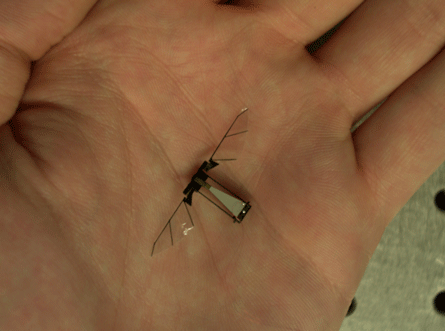A tiny mechanical entomopter using insect-like wing dynamics has achieved tethered flight following US Defense Advanced Research Projects Agency funding of a "robotic fly" project at Harvard University's School of Engineering and Applied Sciences.
The entomopter has a 30mm (1.18in) wingspan and weighs just 60mg (0.002oz). With the concept of stealth surveillance robots in mind, researchers had to use laser micromachining and electroactive polymers to manufacture the entomopter's components. Electroactive polymers change shape when a voltage is applied, creating muscle-like action.

The team abandoned the idea of using bearings and joints because conventional manufacturing processes could not cope with the entomopter's tiny scale, and rejected microelectromechanical systems because they are too expensive and would take too long to produce.
"Simply scaling down existing macro-scale [manufacturing] techniques will not come close to the performance that we need," says Robert Wood, robotic fly project leader and professor at the School of Engineering and Applied Sciences, which collaborated with University of California, Berkeley researchers on the work.
Instead laser machining was used to cut thin sheets of polymer and carbonfibre into two-dimensional patterns with a 2micrometre tolerance. The arrangement of fibre and polymer created functional parts that can bend and rotate.
Source: Flight International




















